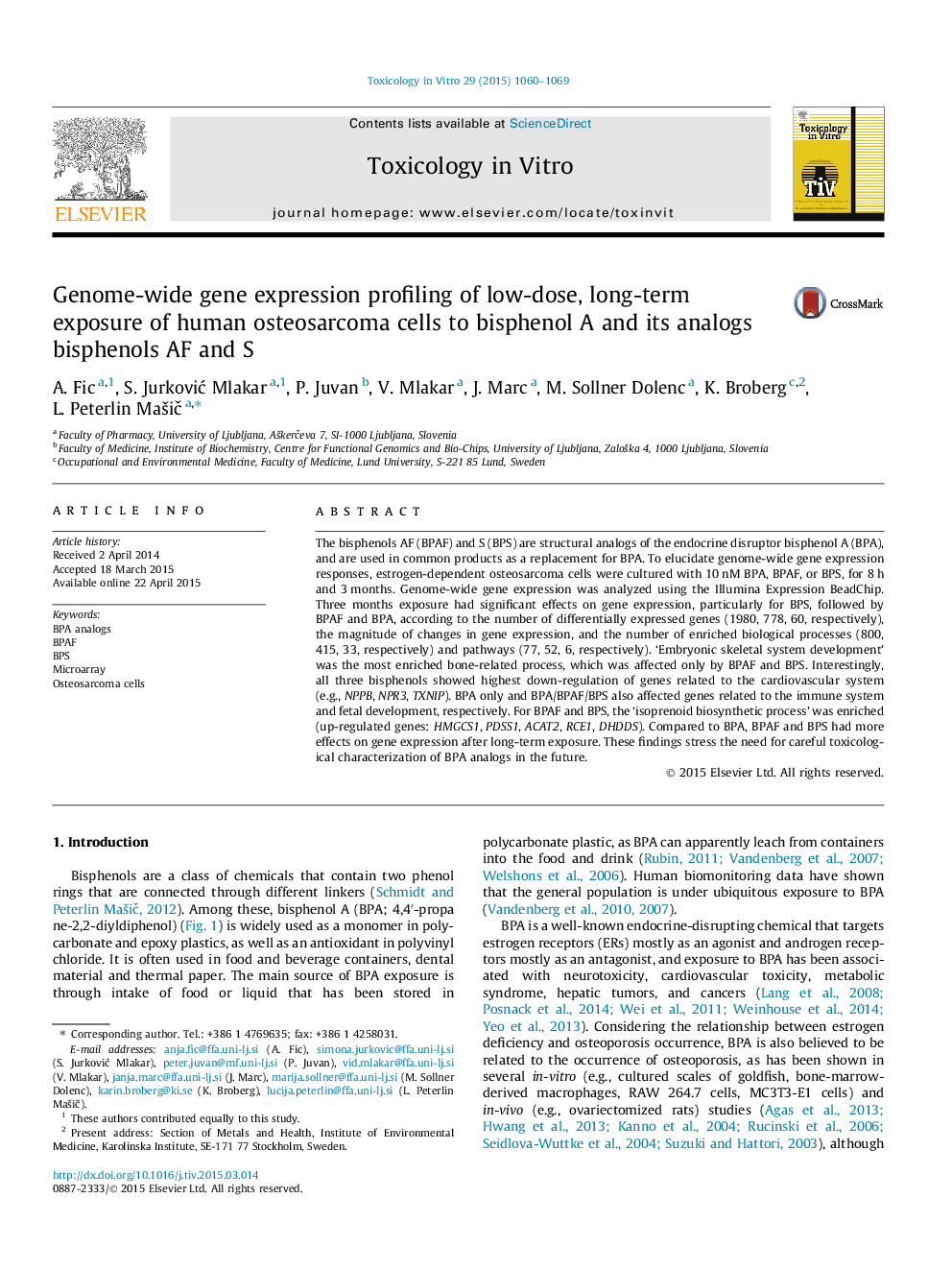| Article ID | Journal | Published Year | Pages | File Type |
|---|---|---|---|---|
| 5861586 | Toxicology in Vitro | 2015 | 10 Pages |
â¢Human osteosarcoma cells were exposed to bisphenols BPA, BPAF and BPS for 3 months.â¢These analogs show distinct gene expression profiles, with widest induction for BPS.â¢They affect genes of the cardiovascular and immune systems, and for fetal development.â¢BPAF/BPS affect bone-related genes, for development of the embryonic skeletal system.â¢Potential toxicological effects for BPS and BPAF are of greater concern than for BPA.
The bisphenols AF (BPAF) and S (BPS) are structural analogs of the endocrine disruptor bisphenol A (BPA), and are used in common products as a replacement for BPA. To elucidate genome-wide gene expression responses, estrogen-dependent osteosarcoma cells were cultured with 10Â nM BPA, BPAF, or BPS, for 8Â h and 3Â months. Genome-wide gene expression was analyzed using the Illumina Expression BeadChip. Three months exposure had significant effects on gene expression, particularly for BPS, followed by BPAF and BPA, according to the number of differentially expressed genes (1980, 778, 60, respectively), the magnitude of changes in gene expression, and the number of enriched biological processes (800, 415, 33, respectively) and pathways (77, 52, 6, respectively). 'Embryonic skeletal system development' was the most enriched bone-related process, which was affected only by BPAF and BPS. Interestingly, all three bisphenols showed highest down-regulation of genes related to the cardiovascular system (e.g., NPPB, NPR3, TXNIP). BPA only and BPA/BPAF/BPS also affected genes related to the immune system and fetal development, respectively. For BPAF and BPS, the 'isoprenoid biosynthetic process' was enriched (up-regulated genes: HMGCS1, PDSS1, ACAT2, RCE1, DHDDS). Compared to BPA, BPAF and BPS had more effects on gene expression after long-term exposure. These findings stress the need for careful toxicological characterization of BPA analogs in the future.
